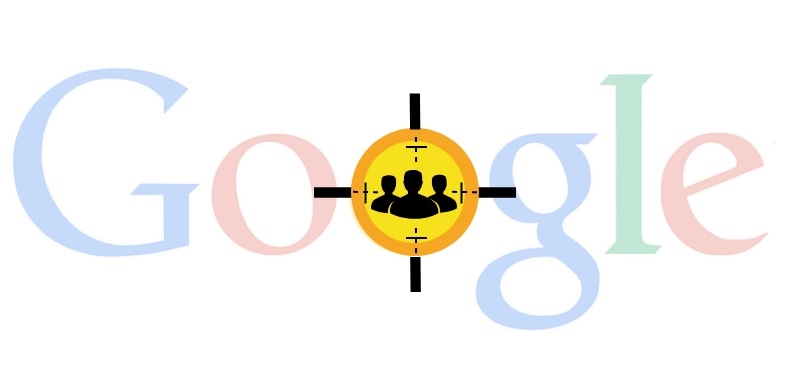— February 7, 2019

As a digital content marketer, my biggest challenge is to write SEO content which ranks in search engines and appeals people too.
And I’m not the only one trying to strike that balance.
SEO marketers think so much on behalf of search engines that in their mind I think they personify search engine bots. It’s so common to hear statements like-
Google doesn’t like this type of content…
It’s hard to please Google with average content…
Sometimes it makes me feel that, more often than not, SEO content is created to woo Google!
Does that make search engine as the target audience of our SEO content?
Why target audience for SEO content matters?
In case you are not familiar with the term ‘target audience’, audience is the target reader or consumer of content for whom you make your content most relevant.
Let’s say you are writing an article on ‘how solar panels work?’ If you are targeting engineers, then your content will be very technical and detailed. On the other hand, home owners who are potential users of solar panels, are also searching online using this keyword, but with a different intention. They are self-educating buyers and just want a high level overview to make an informed buying decision. Try to feed home owners a tech-heavy article and you’ll see them fleeing the page within seconds.
When readers find the content relevant and useful, they spend time on it (dwell time increases). When enough people spend time on that page, Google RankBrain will do its best to up-rank that content to make it easier to find for other readers i.e. target audience who would use similar set of keywords to find content like this. A study by SearchMetrics found that the average time on site or dwell time for a top 10 Google result is 3 minutes and 10 seconds.

Try to put yourself in the reader’s shoes. Will you spend even 10 seconds extra on a page where you do not find useful content? It doesn’t matter whether you’re looking for entertaining content to kill your boredom or if you are looking for a solution to your problem- every second which you give to a page by sticking to it is in return for relevant content.
SEO is all about content marketing and an integral part of inbound marketing. As a SEO copywriter, if you don’t know your target audience well, it is not possible to create content which connects with the audience. Target audience determines the content that’ll appear in the writing, video etc. In fact, identifying audience is one of the most crucial steps in building a successful content & inbound marketing strategy.
Who should be the target audience – search engines or people?

SEO marketers obsess over how Google search engine works. They try to create content for Google.
It’s ironical, because Google is obsessing over human behavior. They try to upgrade search algorithms by emulating search engine readers. Google believes that the content is for people.
People simply search for content on search engines. That makes search engines just a medium for content discovery, not the target audience.
There is an ‘Understanding Target Audience’ gap
Many SEO marketers jump straight to start keyword research.
‘We need blogs, articles, PR, etc. Here are the keywords.’
And that’s how such marketers brief their SEO copywriter.
In such cases, writers do not have much clarity about their target audience. They are not briefed about the pain points and challenges faced by the target audience. Sometimes they don’t even understand how the business has to be positioned through the content.
If the writer doesn’t understand my problem in the first place, what are the chances that the solution in the content will be of real help to me? Can a doctor prescribe the right medicine without knowing the source of illness?
There is a gap in understanding the target audience.
That reason for that gap is SEO professionals often do not make effort to understand their audience. Because SEO is considered as technical, this perception keeps SEO marketers away from the traditional marketing strategy techniques.
To bridge that gap…
I’ll share my own experience of managing SEO projects at OH! Design Studio. For every new SEO project, I start by understanding the company, its offerings, the brand positioning and customer profile.
Company information that I look out for includes the background, vision and mission, how they are currently perceived in the market and the way they want to be perceived. Although not related to SEO and keyword directly, but this information helps in the content strategy phase. For example, consider an IT development start-up with offices in USA, Singapore and India. I have to know as a digital marketer whether the IT client wants to be perceived as an agile start-up, or as an outsourcing hub, or if they want to bring some technical expertise to limelight for international tie-ups. Marketers help shape the desired brand perception to attract the right type of customers.
What are the right types of customers?
For that, understand the target market segment of the brand, what challenges people in that segment face and how the company’s offerings solve those problems.
The idea is to identify the target audience and their buying journey in context of the company background and business goals. Knowing these things helps me better in defining a content strategy and prioritize content to bring to the forefront.
Conclusion
SEO is getting harder with time and its success is getting more dependent on content. While content has to be ‘optimized’ for search engines, but it has to appeal ‘people’ in the target market segment. Those people are the target audience for your SEO content.
How do you research your target audience? Share your approach and thoughts in the comments below!
Digital & Social Articles on Business 2 Community
(165)
Report Post


